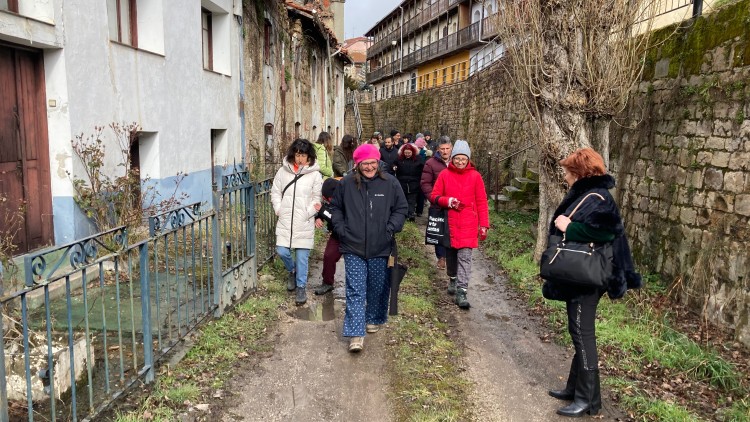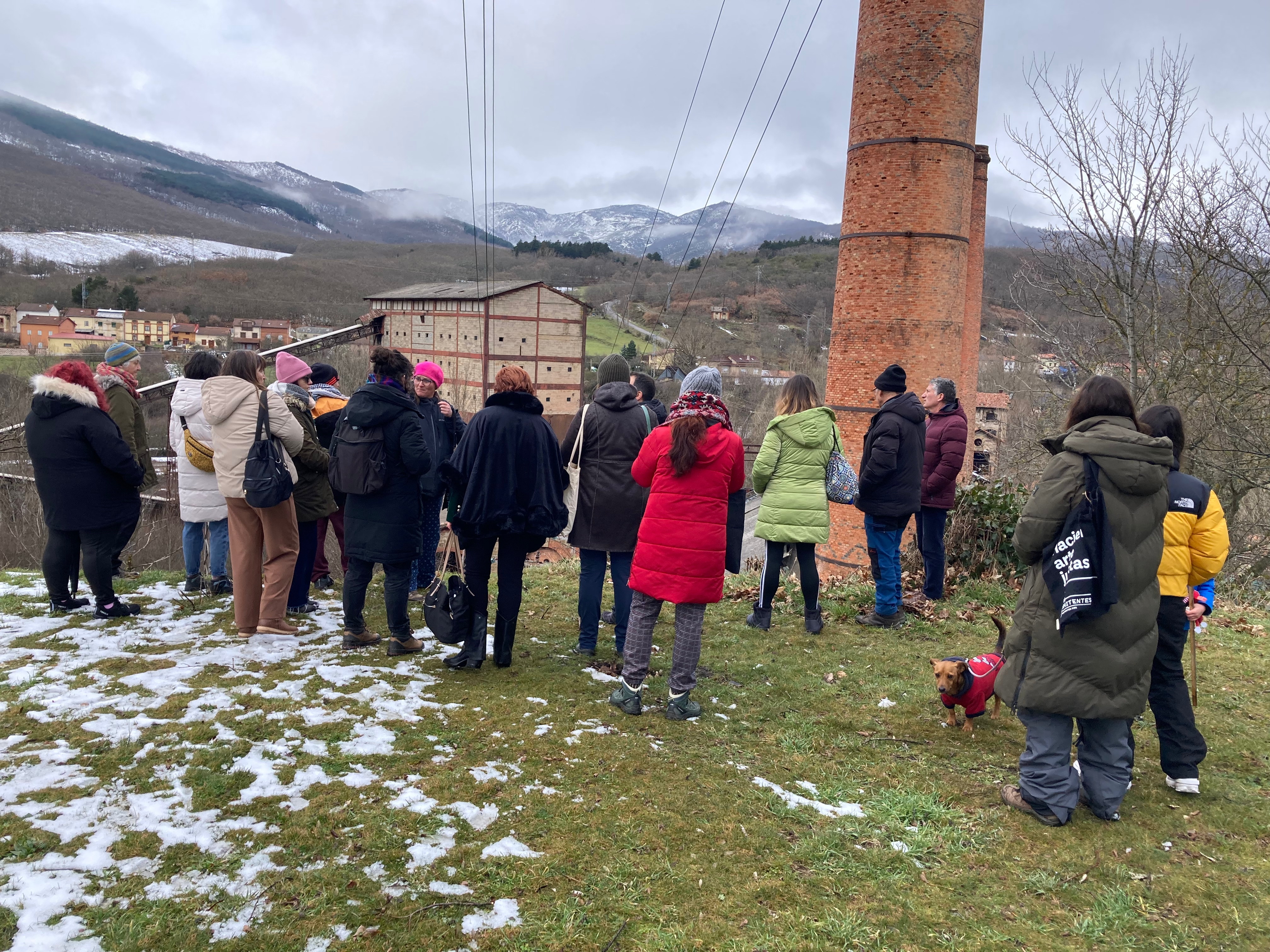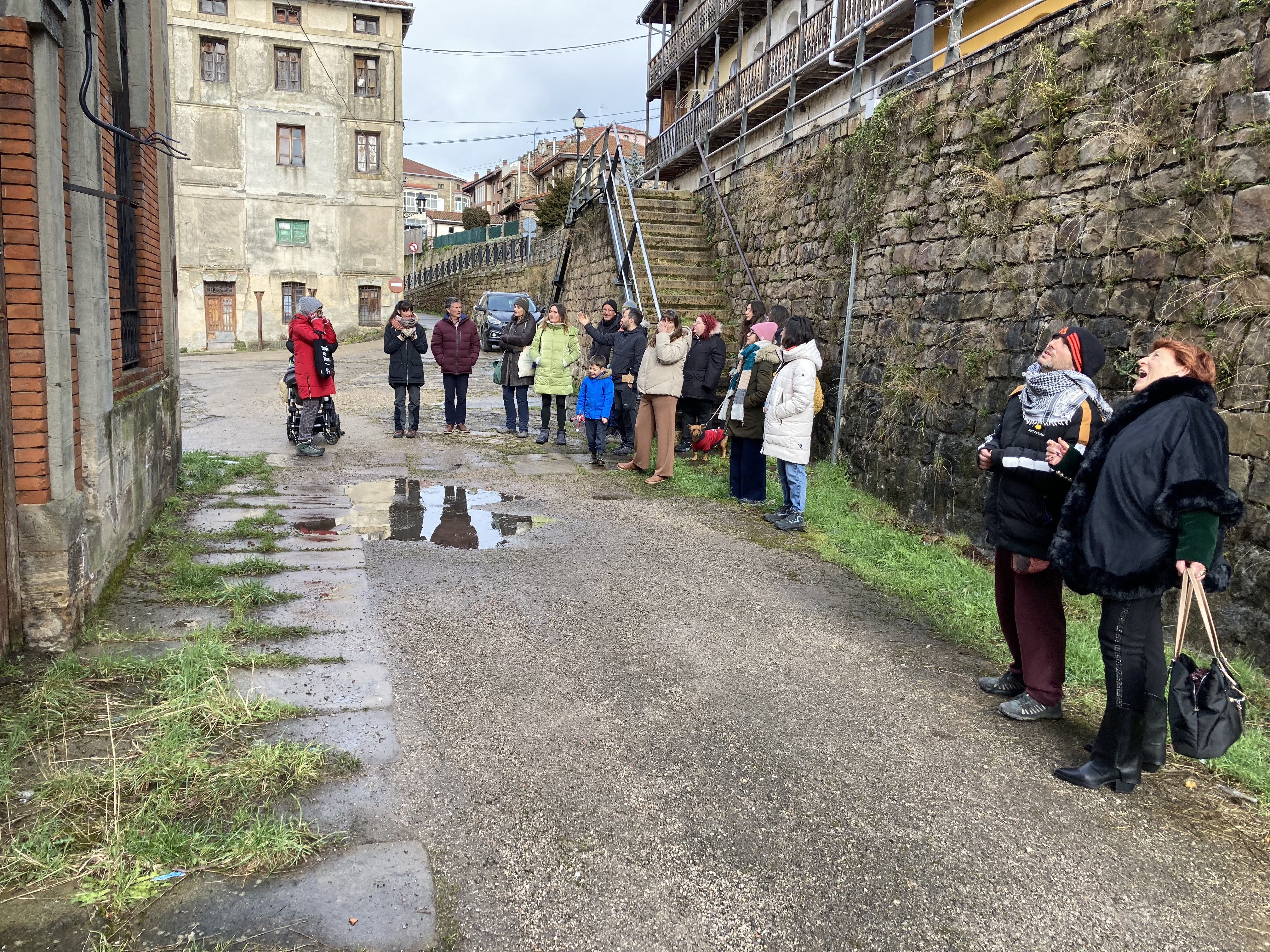First snowfall, first meeting in Barruelo de Santullán

The comissioners begin to work, searching for their own definitions of the word “repair”, and we visit the perimeter of the abandoned industrial area of Barruelo de Santullán.
Aquí puedes leer el texto en español / Here you can read the text in spanish
The first meeting took place in Barruelo de Santullán (Palencia, Spain) on 1 and 2 February, after a snowfall that still covered some rooftops. It was quite cold and a few snowflakes were still falling. But we were sheltered in La Casa del Pueblo.
Twenty-one people accompanied us, and the mediator, Alfredo Escapa, explained how the work process would unfold, describing François Hers' protocol, which would guide this work.
We worked on the word ‘repair’, which in Spanish has several meanings (to fix, to compensate, to notice, to realise), with the aim of allowing participants to redefine it based on their personal experiences and their relationship with the territory.
With this idea of reappropriating the word ‘repair’, concepts such as taking responsibility, becoming aware of the hands that preceded us, resolving conflicts, not giving up and learning emerged, along with many others.
Based on these ideas, we thought about the present, past and future of Barruelo de Santullán, trying to realise what is already happening in this village, what has already happened and what our wishes are for the future of the community.

On day 2, although it was still bitterly cold, we wanted to walk around the old abandoned industrial area of the village.
This place is a space closed to the town, whose streets were open to the public during the decades when the mine was in operation. Now its gates are closed to everyone. The residents feel that this space, where their personal, work and ideological stories took place, has been taken away from them. This place is a great open wound in the hearts of the neighbourhood.
This enormous space is closed off by many gates. In this way, the gates begin to be seen as a problem that will run through this project, since, while gates are often an invitation, here they are a symbol of expulsion. And these residents, they say, are here not only resisting but also trying to build a better future for themselves and future generations.

Primeras nieves, primer encuentro en Barruelo de Santullán
Los comitentes comienzan a trabajar, buscando definiciones propias de la palabra “reparar” y visitamos el perímetro de la zona industrial abandonada de Barruelo de Santullán.
El primer encuentro es en Barruelo de Santullán (Palencia, España) los días 1 y 2 de febrero tras una nevada, que cubría aún algún tejado. Hacía bastante frío y aún se escapaba algún copo de nieve. Pero estábamos refugiados en La Casa del Pueblo.
21 personas nos acompañaron y el mediador, Alfredo Escapa, explicó cómo iba a ser el proceso de trabajo, contando el protocolo de François Hers por el que se va a guiar este trabajo.
Se trabajó sobre la palabra “reparar” que en castellano tiene varias acepciones (arreglar, compensar, percatarse, darse cuenta), con el fin de que los participantes la resignificasen a partir de sus vivencias personales y su relación con el territorio.
Con esta idea de reapropiación de la palabra “reparar” aparecieron, junto con muchos otros, conceptos como: responsabilizarse, tomar conciencia de las manos que nos precedieron, deshacer conflictos, no abandonar o aprender.
A partir de estas ideas pensamos en el presente, el pasado y el futuro de Barruelo de Santullán intentando darnos cuenta de lo que ya está sucediendo en este pueblo, lo que ya pasó y cuál son nuestros deseos para el futuro de la comunidad.
El día 2, aunque continuaba haciendo un frío intenso, deseábamos caminar alrededor de la antigua zona industrial del pueblo.
Este lugar es un espacio cerrado al pueblo, que durante las décadas en las que estuvo abierta la mina sus calles eran de uso público. Ahora sus puertas están cerradas a cualquier persona. Los vecinos sienten que se les ha arrebatado este espacio donde sucedían sus historias personales, laborales y de posicionamiento ideológico. Este lugar es una gran herida abierta en los corazones del vecindario.
Este enorme espacio está cerrado por muchísimas puertas. De esta manera las puertas se empiezan a nombrar como una problemática que va a recorrer este proyecto, ya que, si en muchas ocasiones las puertas son una invitación, aquí son un símbolo de expulsión. Y estos vecinos, dicen ellos, están aquí no solo resistiendo sino intentando construir un futuro más amable para ellos y las futuras generaciones.
